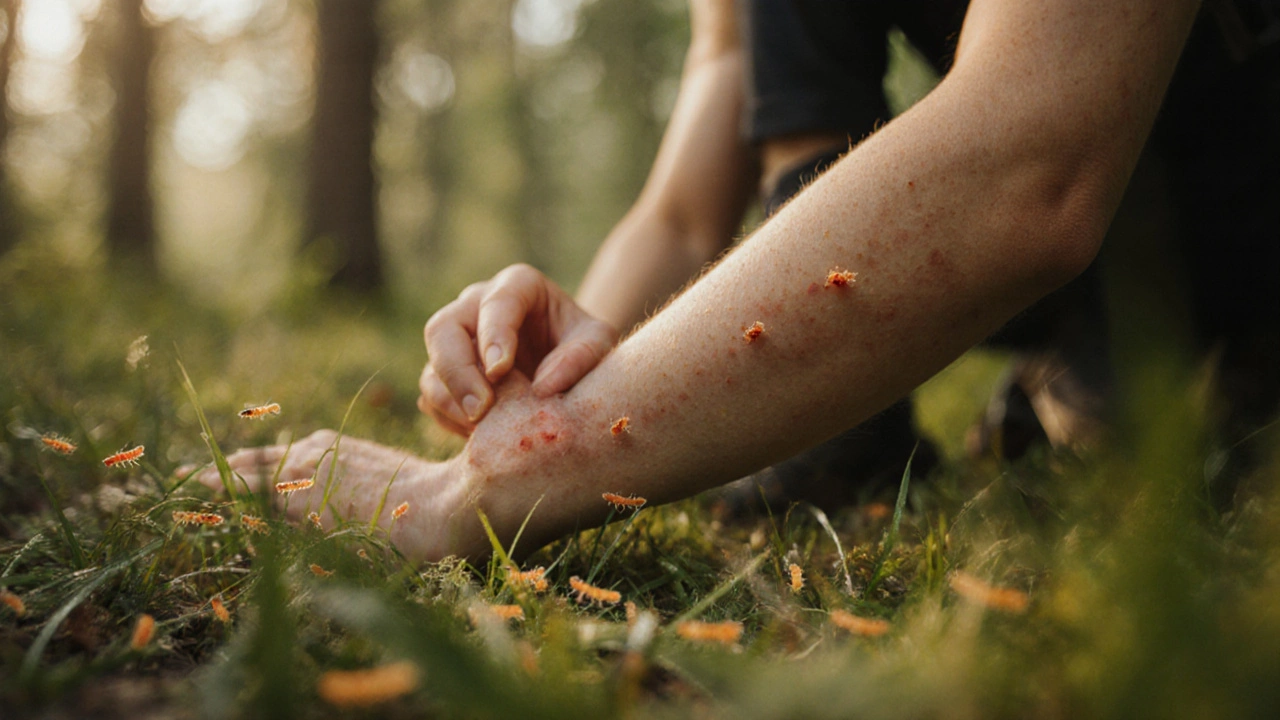When planning a day in the garden, a hike in the woods, or a picnic on the patio, Chigger Bite Prevention, a set of methods to avoid painful bites from chiggers, the tiny red‑eyed mites that thrive in grassy and wooded areas. Also known as chigger bite avoidance, it helps outdoor lovers enjoy nature without the nagging itch and skin irritation that follows a bite.
Understanding the enemy is the first step. Chiggers, mite larvae that latch onto skin, causing intense itching and red welts are most active in humid, shaded spots such as leaf litter, tall grass, and the under‑brush of your favorite walking trail. They don’t jump or fly; they wait for a host to brush past. Because they prefer low‑lying vegetation, they often show up near outdoor furniture, especially wooden or wicker pieces that sit close to the ground. Recognizing where they hide lets you plan smarter: keep patios clear of excess mulch, trim grass short, and store chairs on a raised rack when not in use. This habitat management directly reduces the chance of a bite.
Effective chigger bite prevention combines three core actions: proper clothing, barrier products, and post‑exposure care. First, wear long sleeves, tall socks, and shoes that seal the ankle; tightly woven fabrics act like a physical shield that chiggers can’t penetrate. Second, apply a reliable insect repellent, a topical solution containing DEET, picaridin, or oil of lemon eucalyptus to exposed skin and the cuffs of your clothing. Research shows that repellents containing at least 20% DEET reduce bite incidence by up to 90%. Finally, if you do find a bite, wash the area with soap and water within minutes; this removes the mite before it embeds its mouthparts. A cool compress afterward eases itching, and over‑the‑counter hydrocortisone helps calm the inflammation.
These steps work together: knowing chigger habitats influences where you wear protective gear; using repellents directly lessens the risk of attachment; and immediate cleaning cuts down the severity of any reaction. By integrating habitat management, proper attire, and topical defenses, you create a layered defense that keeps chiggers from ruining your outdoor plans.
Below you’ll find a curated collection of articles that dive deeper into each of these tactics, from choosing the right outdoor furniture to selecting the most effective repellent formulas. Explore the guides and start building your bite‑free outdoor experience today.

Discover which scents repel chiggers, why they work, and how to apply natural or synthetic repellents safely for effective bite prevention.
More